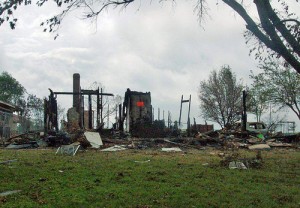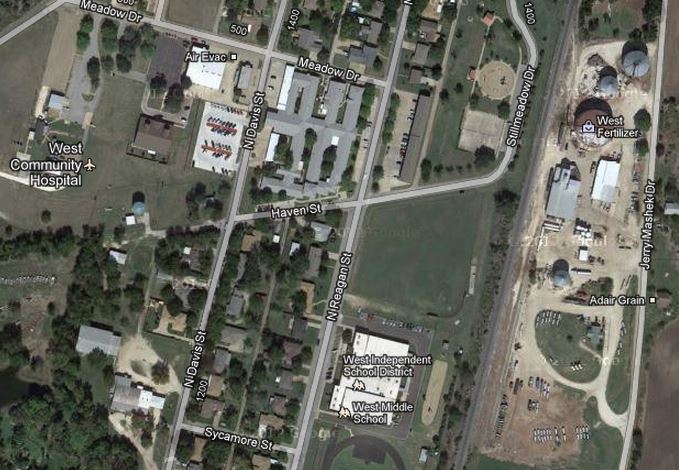John Galt’s Trail of Death and Destruction Continues to Grow

Building destroyed in West, Texas fertilizer explosion. (Courtesy of State Farm via Flickr under Creative Commons license.)
John Galt has been a deadly and destructive guy lately, with the largest of his most recent attacks taking place in the garment factory collapse in Bangladesh on April 24 where the death toll has now tragically topped 900 and the fertilizer storage facility explosion in West, Texas on April 17 that miraculously killed only fourteen people but injured over 200 and caused damage that is now estimated to exceed $100 million.
In an interesting development, Bangladesh has shown that at least on some fronts it is more civilized than Texas. Both the building’s owner and the engineer accused of colluding with the owner to add three unregulated floors on top of the building have been arrested, while Texas lawmakers, previously known for their refusal to vote in favor of disaster relief when it was in New York and New Jersey, now have called for socializing the losses in Texas. Of course, since the fertilizer plant owner (who has not been arrested) only carried $1 million in liability insurance (and since Texas doesn’t require liability insurance for many businesses operating with dangerous materials), those losses are bound to be socialized anyway.
From CBS News on the response to the disaster in Bangladesh:
Finance Minister Abul Maal Abdul Muhith spoke as the government cracked down on those it blamed for the disaster in the Dhaka suburb of Savar. It suspended Savar’s mayor and arrested an engineer who had called for the building’s evacuation last week, but was also accused of helping the owner add three illegal floors to the eight-story structure. The building owner was arrested earlier.
The government appears to be attempting to fend off accusations that it is in part to blame for the tragedy because of weak oversight of the building’s construction.
It looks like Muhith went a bit too far in trying to deflect responsibility from the government:
During a visit to the Indian capital, New Delhi, Muhith said the disaster would not harm Bangladesh’s garment industry, which is by far the country’s biggest source of export income.
“The present difficulties … well, I don’t think it is really serious — it’s an accident,” he said. “And the steps that we have taken in order to make sure that it doesn’t happen, they are quite elaborate and I believe that it will be appreciated by all.”
The article goes on to point out that Muhith had made a similar hollow promise to improve safety conditions several months ago when a fire in a garment factory killed over a hundred workers.
In a tragic testament to the shoddy conditions in these facilities in Bangladesh, we have word this morning of another eight deaths in a fire in a garment factory. However, this time the fire was after hours and it wasn’t workers who were killed: Read more →

